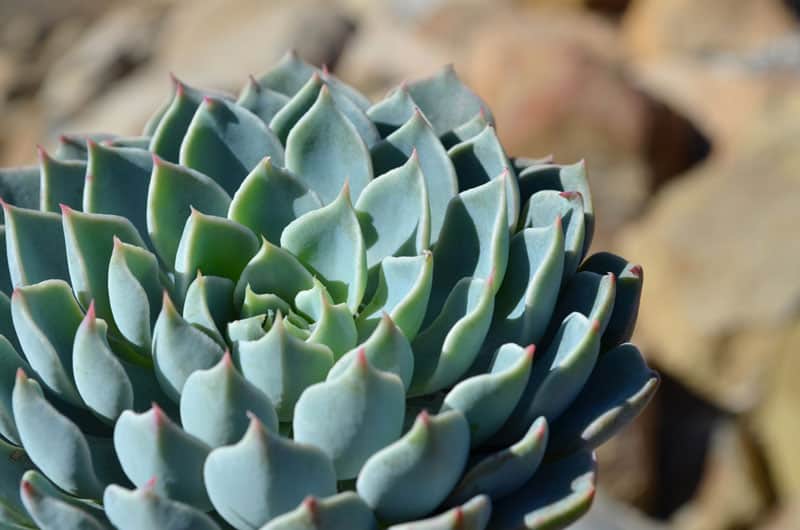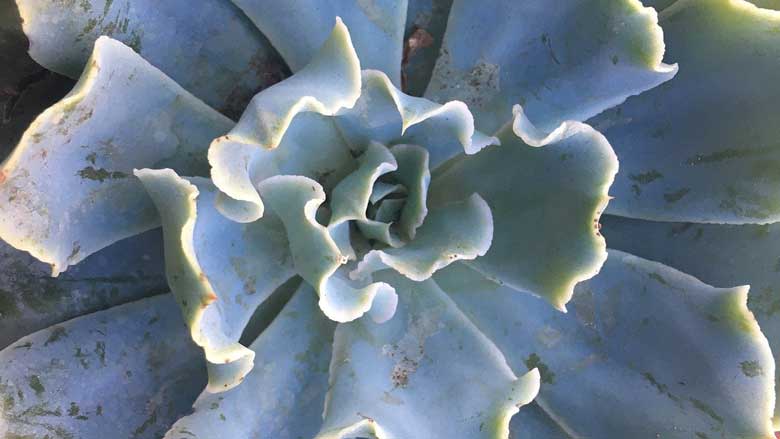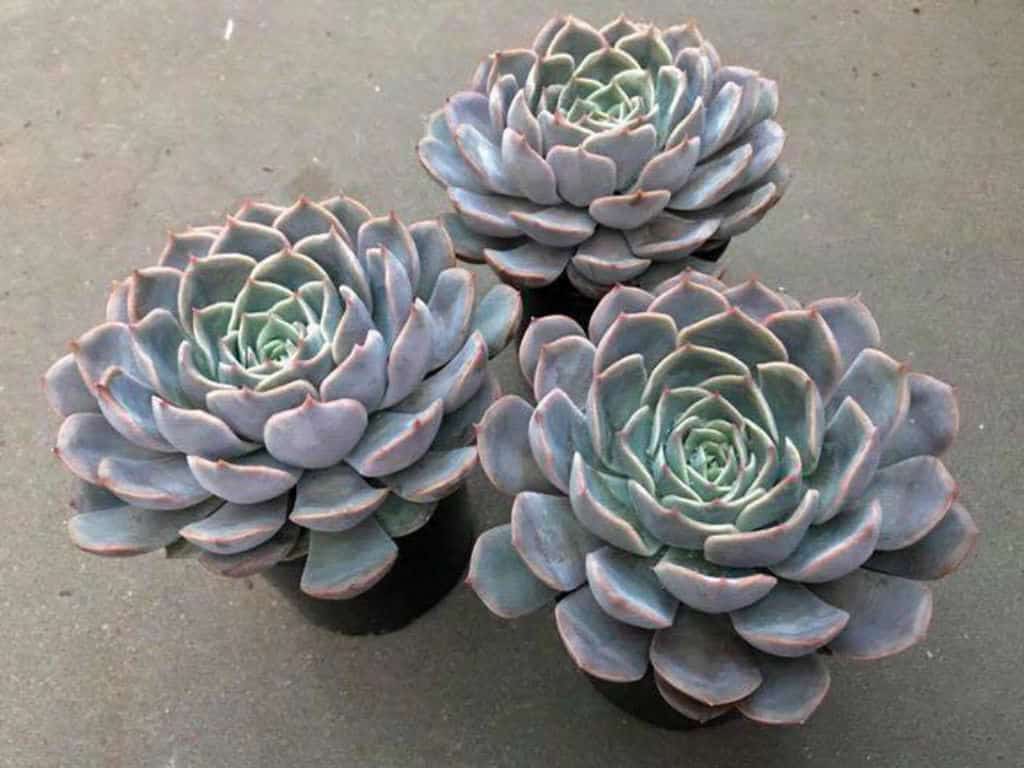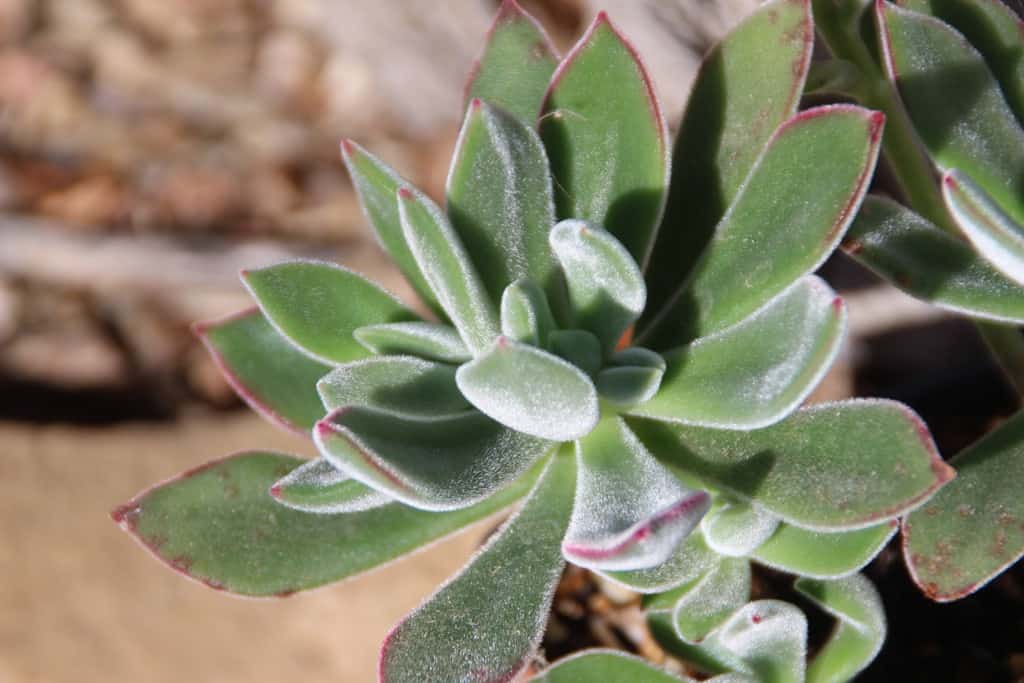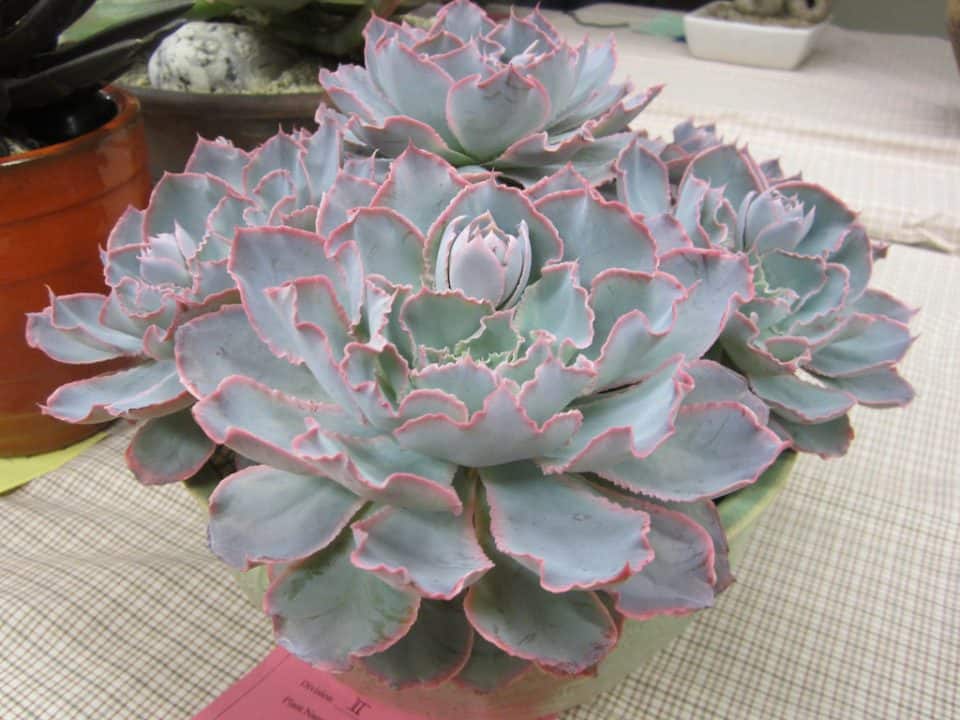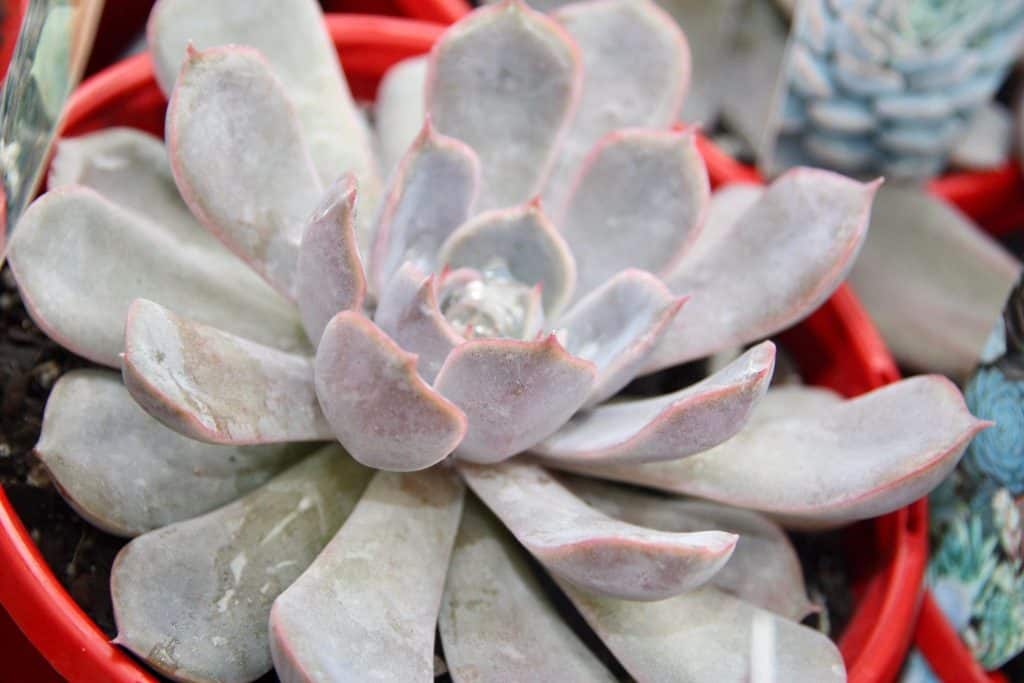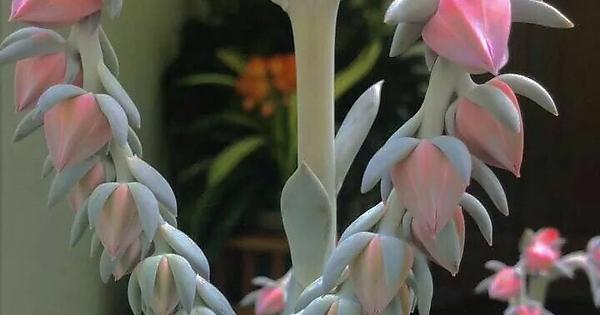Echeveria Allegra is the perfect plant for anyone who wants to start their journey into growing and caring for plants but doesn’t want to be overwhelmed with an extensive list of care instructions. With this low-maintenance succulent, you won’t have to worry about overwatering or under-watering, making it one of the most forgiving and easy-to-grow echeverias in existence.
This echeveria plant (Echeveria Allegra) has been rising in popularity over the past few years, with its bright colors and variety of shapes and sizes making it a great gift for anyone you know who loves plants and flowers. These easy-to-care-for plants are excellent starter plants if you’re new to gardening.
It is an extremely easy succulent to care for and perfect for beginning gardeners. If you’re looking to add some beautiful color to your home or office without too much effort, then this guide on echeveria Allegra care and growing tips will help you bring this impressive specimen into your life with minimal effort on your part.
Here are some tips on how to care for echeveria Allegra that will get you started off on the right foot.
Origin and distribution
Echeveria Allegra is a species of flowering plant in the Crassulaceae family, native to Mexico. It is widely used as an ornamental plant in landscapes or in container gardens. They require little care and can thrive on neglect. Echeverias are great beginner plants because they are resilient and forgiving. Most gardeners will find that these plants do not need much attention at all.
These succulent plants prefer bright light but will tolerate partial shade. Watering frequency depends on how hot it is where you live; if it’s hot and dry, water more frequently than if it’s cool and humid. In general, water, when the soil feels dry, is about one inch down.
Echeveria Allegra Propagation
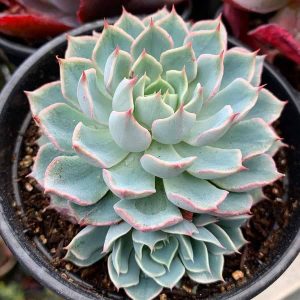
Echeveria ‘Allegra’ grows easily from stem cuttings. Cut a section of the stem off using pruning shears, and then separate out some of the bottoms leaves to create a healthy surface area. Make sure you have clean hands before touching your plant, as bacteria can affect its health.
Fill a container with lightly moistened potting soil, stick it in your Echeveria cutting, and cover it with more potting soil until it is completely covered. Leave at least one inch between each cutting so that they don’t get tangled up. Water them well and place them in an area where they will receive indirect sunlight or bright, indirect light.
Keep them watered regularly while they are growing, but be careful not to overwater, you want to make sure there is always enough moisture in their soil without drowning them! Once roots start forming (this should take about three weeks), transplant your new plants into individual pots filled with regular potting soil.
Echeveria Allegra care information
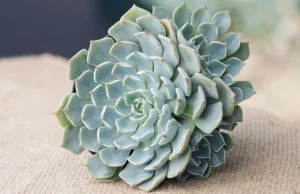
Echeveria (or Echeverias) are succulent plants, which means they’re prone to rot if they get too wet. Don’t let them sit in water; give them a quick rinse, then let them dry thoroughly before watering again.
Although they are drought-tolerant, don’t let your echeveria dry out completely. Water your plant when you see wrinkles on its leaves or stems, or when you think it needs it. When you do water, do so until excess moisture drips from the bottom of your pot. Then wait until that moisture is gone before watering again.
Light requirement
Echeveria Allegra prefers full sunlight or partial shade. Ensure your plant is in a spot that receives at least five hours of direct sunlight each day. If you live in an area with bright, indirect light, such as near a large window, you may be able to get away with giving it less light than normal. If your echeveria grows too tall and thin, consider moving it to an area with more sun exposure.
Soil/potting mix
Echeverias are epiphytes, which means they grow on other plants, such as trees and rocks. Although they do not require soil to grow, they will perform better when placed in a small pot filled with a potting mix. You should water them only when you see that their soil is dry.
Keeping your echeveria healthy can be a challenge if you are inexperienced in caring for houseplants. However, these succulents are quite forgiving and easy to care for once you know what they need.
Watering
Water your echeveria Allegra sparingly. Echeverias will survive on what many people would consider being little-to-no water, which is why they’re great plants for beginners. If you live in a particularly hot or dry climate, it may be a good idea to set up a drip irrigation system so that you can give your echeveria as much water as it needs while keeping it from drying out too quickly.
You should allow your soil to dry out between watering—if you find yourself having to water more than once per week, try increasing the amount of time between each watering.
Fertilizer
You can fertilize Echeveria Allegra three or four times a year, depending on how quickly you want it to grow. Use an all-purpose fertilizer like 10-10-10. This will keep your plant alive and growing healthily.
If you’re using a liquid fertilizer, follow package instructions; if you’re using granular fertilizer, use 1/4 cup per gallon of water. Water your plant well after applying—the roots need to be soaked in order for them to absorb nutrients effectively.
Temperature
Echeveria is a hardy plant and can tolerate temperatures between 32–100°F (0–38°C). Make sure to keep it out of direct sunlight, however. Like succulents in general, echeverias prefer low-light conditions. If you are planning on putting your echeveria in an area that gets a lot of natural sunlight, it may be best to put it outside during the winter months when there is less light.
Humidity
Echeveria Allegra is very drought-tolerant, but they do best when you provide some water. For that reason, it’s a good idea to let your echeveria dry out between waterings. Like many succulents, echeverias will let you know when they need more water; if their leaves turn brown and start to fall off, then you’ve been neglecting your plant and it could use a drink.
The ideal humidity range is between 40 and 60 percent. You can use a humidifier or place your echeveria on a tray of wet pebbles to increase humidity around it. If you don’t want to mess with any of that, just make sure you water your plant regularly, it’ll be happy as long as it doesn’t dry out completely. If you do forget to water your echeveria for a few days, don’t worry; it will survive!
Pruning
Proper pruning will keep Echeveria Allegra bushy and full, improving air circulation and preventing rot. In spring, just as new growth begins, cut back each stem by one-third to encourage branching; pinch off any errant leaves that develop at nodes. In summer and fall, trim back spent stems to within an inch of soil level. Wait until after flowering in early spring to shear off all old stems. This prevents you from accidentally cutting into flowers or buds.
A good rule of thumb is to always err on the side of caution when it comes to pruning your succulents, you can always snip a little more off if you need to, but it’s difficult (and sometimes impossible) to repair the damage done with a pair of scissors! Just remember: less is more!
You can also propagate echeveria Allegra by taking leaf or stem cuttings during the spring or summer months.
When to repot
Echeveria Allegra prefers to be repotted when they’re at least two years old, but it’s possible to repot them as early as one year if you can keep them in a relatively small pot. If you wait too long, however, your plant will outgrow its container and become stunted. These hardy succulents can live up to 20 years with proper care and an annual repotting session.
Dormancy
Like many succulents, Echeveria plants are part of a group of plants known as dormant perennials. They survive long periods of drought by entering a state of suspended animation, essentially slowing their metabolic rate and waiting out unfavorable conditions. It’s called dormancy, and it means that your plant will lie flat on its leaves during those particularly hot, dry summer months; however, it won’t disappear forever.
Echeveria Allegra flower & fragrance
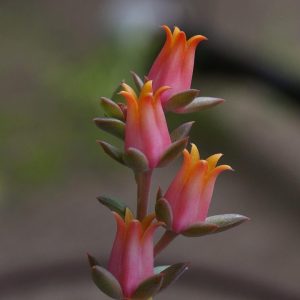
Echeverias are known for their fragrant scent and beautiful flowers. They like to be watered regularly, but do not let them become over-saturated. When watering your Echeveria Allegra, use room temperature water instead of cold water as cold water can lead to root rot and may harm your plant.
As a general rule, make sure you are using enough potting soil to allow airflow in between parts of the soil.
Growth rate
Echeveria Allegra is a slow-growing succulent that can reach a height of about 6 inches when mature. It has a rounded, leafy form and tends to fill out more in diameter than in height.
Toxicity
Echeveria Allegra is highly toxic to dogs and cats. Because it can be mistaken for a tasty snack, keep your plant away from pets! For any small children in your household, make sure they also don’t try to nibble on it—both pets and kids will get very sick if they eat Echeveria. As with all toxic plants, wash your hands after handling Echeveria plants.
USDA hardiness zones
Echeveria Allegra thrives in USDA hardiness zones 9 and 10. In colder climates, it can be grown as a houseplant.
Pests and diseases
As with most indoor plants, Echeveria Allegra is susceptible to pests and diseases. Spider mites and whiteflies, which feed on plant sap, often attack young plants. Treat them by washing them with warm water, spraying them with insecticidal soap, or applying neem oil or horticultural oil as a barrier. Mealybugs and scale also sometimes infest Echeverias.
For more severe infestations use chemical treatments according to directions on packages. Pests tend to appear in late summer and fall when days grow shorter. While it’s difficult to keep Echeverias completely pest-free indoors, they generally don’t need special care if kept healthy.
They do best in bright light but will tolerate low light levels if kept moist; allow soil surface to dry between watering. During periods of prolonged cool temperatures, keep soil evenly moist; do not overwater during hot weather.
Conclusion
As a beginner, you may feel overwhelmed by all of the beautiful plants available to you. If you’re looking for a plant that’s low-maintenance, colorful, and can be added to almost any decor, Echeveria Allegra is an excellent choice. It’s a succulent plant with blue-green leaves and beautiful flowers that require little care and can grow in either full sun or partial shade.
